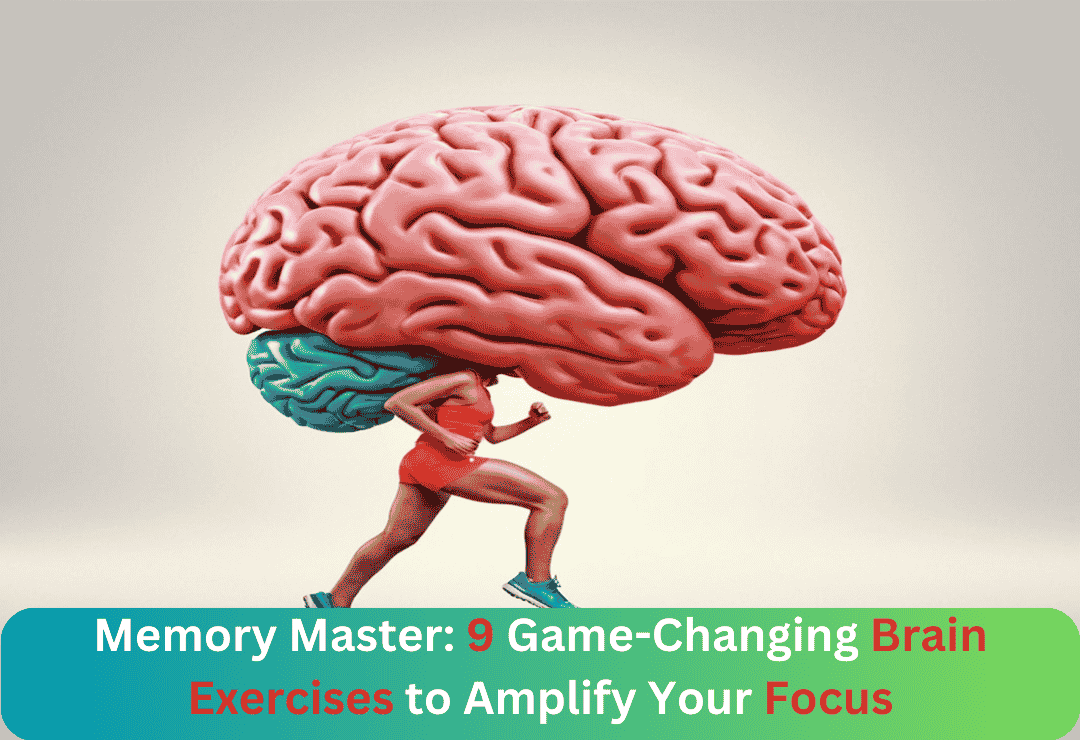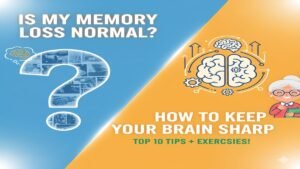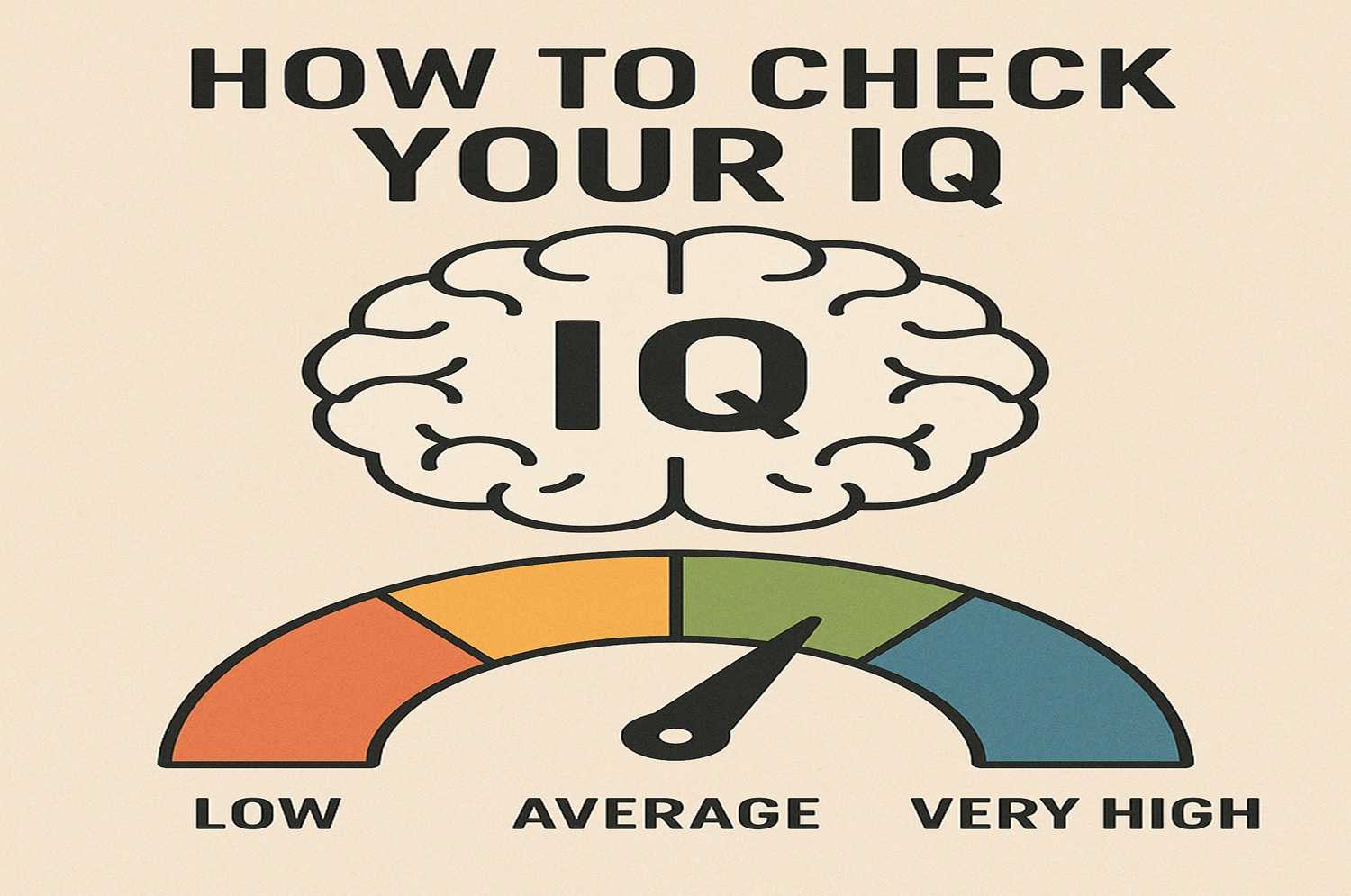9 Quick Brain Exercises to Boost Your Memory and Sharpen Focus: A Science-Backed Guide
When was the last time you gave your brain a proper workout? While many of us spend time exercising our bodies, we often overlook the importance of keeping our minds sharp and agile. In this comprehensive guide, we’ll explore nine scientifically supported brain exercises that can enhance your memory and improve your focus in just minutes a day.
Table of Contents
ToggleUnderstanding Brain Plasticity: The Science Behind Mental Exercise
Before diving into specific exercises, it’s essential to understand why they work. Our brains possess remarkable plasticity—the ability to form new neural connections and reorganize existing ones throughout our lives. This means that with regular mental exercise, we can strengthen our cognitive abilities, similar to how physical exercise builds muscle.
Dr. Michael Merzenich, a pioneer in brain plasticity research, has shown that targeted mental exercises can improve everything from memory and attention to processing speed and problem-solving abilities. The key is consistency and choosing exercises that challenge different aspects of cognitive function.
1. The Number-Letter Connection Challenge
This exercise combines numerical and alphabetical sequences to engage multiple cognitive pathways simultaneously. Start by writing numbers 1-20 and letters A-T. Now, try connecting them alternately (1-A-2-B-3-C and so on) as quickly as possible while maintaining accuracy.
Research from the University of Michigan has demonstrated that tasks requiring rapid switching between different types of information can significantly improve cognitive flexibility and working memory. Practice this exercise for just three minutes daily to see improvements in your mental agility.
2. Reverse Word Building
Here’s a twist on traditional word games that specifically target memory and verbal fluency. Choose a long word (minimum eight letters) and give yourself three minutes to create as many smaller words as possible using only those letters. The catch? You must spell each word backward as you write it.
This dual-task approach forces your brain to maintain information in working memory while performing manipulation tasks, strengthening both short-term memory and cognitive processing speed.
3. The Visualization Memory Palace
This ancient technique, famously used by memory champions, has been validated by modern neuroscience. Choose a familiar route (like your path to work) and mentally place items you need to remember along this route, creating vivid, unusual images for each one.
A study published in the Journal of Experimental Psychology found that participants using this method improved their memory recall by an average of 50% compared to traditional rote memorization.
4. Mindful Observation Exercise
This exercise combines mindfulness practices with memory training. Choose an object and study it intensely for 60 seconds, noting every detail. Turn away and write down everything you remember. This practice not only improves observational skills but also strengthens the connection between attention and memory formation.
Research from Harvard Medical School suggests that mindfulness exercises like this can increase gray matter density in brain regions associated with learning, memory, and emotional regulation.
5. The Music Memory Challenge
Creating new neural pathways becomes more manageable when we combine cognitive tasks with sensory experiences. Choose an unfamiliar piece of instrumental music and attempt to identify and remember three distinct instruments or musical elements. After listening, wait five minutes, then try to hum or describe those specific elements.
Neuroscientists have found that musical training and memory exercises can enhance cognitive reserve, potentially providing protection against age-related mental decline.
6. Cross-Body Coordination Tasks
Physical movements that cross the body’s midline help integrate both hemispheres of the brain, potentially improving cognitive function. Try this: While seated, lift your right knee and touch it with your left elbow, then alternate sides. Perform this exercise for 60 seconds while simultaneously counting backward from 100 by sevens.
Studies from the International Journal of Neuroscience suggest that coordinated physical movements combined with cognitive tasks can enhance neural efficiency and improve attention span.
7. The Story Chain Method
This exercise builds both creative thinking and sequential memory. Start with a simple sentence like “The blue bird flew over the mountain.” Each time you repeat the story, add one more detail, maintaining the exact sequence of previous elements. Challenge yourself to reach 15 or more elements while maintaining perfect recall.
This method leverages the brain’s natural ability to remember information through narrative structures, making it particularly effective for improving sequential memory.
8. The Number Grid Challenge
Draw a 4×4 grid and randomly place numbers 1-16 in the squares. Give yourself 30 seconds to memorize their positions. Cover the grid and try to recreate it exactly. As you improve, increase the grid size or reduce memorization time.
This exercise strengthens visual-spatial memory and has been shown to improve working memory capacity in multiple cognitive studies.
9. Reverse Sensory Association
This unique exercise challenges your brain to process information differently. Choose an everyday object and describe it without using the sense you usually associate with it. For example, describe how an apple sounds or how music tastes. Spend two minutes creating detailed sensory descriptions.
Research from the Creative Cognition Institute shows that this type of creative thinking exercise helps form new neural pathways and improves cognitive flexibility.
Making These Exercises Work for You
Creating a Sustainable Practice Routine
The key to seeing results from these brain exercises lies in consistent practice. Start with just 10-15 minutes daily, focusing on two or three exercises that you find most engaging. Rotate through different exercises throughout the week to ensure you’re challenging various cognitive domains.
Progress Tracking and Adaptation
Keep a simple log of your practice sessions and note any improvements in your daily life, such as:
- Better recall of names and faces
- Improved focus during meetings or study sessions
- Enhanced problem-solving abilities
- Faster mental calculations
- A more vivid memory of recent events
Combining Brain Exercise with Lifestyle Factors
For maximum benefit, support your brain exercise routine with:
- Regular physical exercise
- Adequate sleep (7-9 hours nightly)
- A balanced diet rich in omega-3 fatty acids
- Social interaction
- Stress management techniques
Understanding the Long-Term Benefits
Research indicates that regular cognitive training can provide numerous long-term advantages:
- Reduced risk of age-related cognitive decline
- Improved processing speed and reaction time
- Enhanced creativity and problem-solving abilities
- Better emotional regulation
- Increased mental stamina
When to Expect Results
While individual experiences vary, most people report noticeable improvements in memory and focus within 2 to 3 weeks of consistent practice. However, the most significant benefits come from a long-term commitment to these exercises.
Tips for Success
To maximize the effectiveness of these brain exercises:
- Practice at your peak mental time (usually morning for most people)
- Minimize distractions during practice sessions
- Gradually increase the difficulty as you improve
- Stay consistent with your routine
- Combine different types of exercises
Conclusion
Incorporating these nine brain exercises into your daily routine can significantly improve your memory and focus. Remember that cognitive fitness, like physical fitness, requires consistent effort and patience. Start with exercises that appeal to you most, and gradually expand your routine as you become more comfortable.
By dedicating just a few minutes each day to these scientifically supported exercises, you’re investing in your cognitive health and building a stronger, more resilient mind. Whether you’re a student looking to enhance your study abilities, a professional aiming to improve workplace performance, or simply someone who wants to maintain sharp cognitive function, these exercises provide a practical path to better mental fitness.
Remember, the brain’s remarkable plasticity means it’s never too late to start exercising your mind. Begin today, and you might be surprised by how much sharper and more focused you can become with regular practice.
Read Also:
How to Stop Negative Thoughts 2025
Vivo X200 pro 2024
Frequently Asked Questions About Brain Exercises and Cognitive Training
General Questions
Q: How long should I spend on brain exercises each day? A: Start with 10-15 minutes daily. Research shows that short, consistent practice is more effective than longer, irregular sessions. You can gradually increase this time as you become more comfortable with the exercises.
Q: Can these exercises help prevent cognitive decline? A: While no exercise can guarantee the prevention of cognitive decline, multiple studies suggest that regular cognitive training may help reduce the risk and severity of age-related cognitive decline. It’s most effective when combined with a healthy lifestyle, proper nutrition, and physical exercise.
Q: At what age should I start doing brain exercises? A: There’s no “right” age to start – cognitive training can be beneficial at any stage of life. Children can enhance learning abilities, adults can maintain peak mental performance, and older adults can help preserve cognitive function.
Practice and Implementation
Q: Should I do all nine exercises every day? A: No, it’s better to focus on 2-3 exercises per session and rotate through different ones throughout the week. This ensures you’re targeting various cognitive functions while maintaining quality practice time for each exercise.
Q: What’s the best time of day to do these exercises? A: Most people perform best at cognitive tasks in the morning, about 2-3 hours after waking up. However, the most important factor is choosing a time when you can consistently practice without interruption.
Q: Can I do these exercises while doing other activities? A: While some exercises can be integrated into daily activities, it’s best to give full attention to cognitive training exercises. Multitasking can reduce the effectiveness of the training.
Results and Progress
Q: How quickly will I see results? A: Most people notice small improvements in memory and focus within 2-3 weeks of consistent practice. However, significant, lasting changes typically require 8-12 weeks of regular training.
Q: How do I know if the exercises are working? A: Look for improvements in:
- Ability to remember names and faces
- Focus duration during tasks
- Speed of mental calculations
- Problem-solving abilities
- Memory of recent events
Q: What if I don’t see improvements? A: If you’re not seeing results after 4-6 weeks, try:
- Increasing the difficulty level of exercises
- Ensuring consistent practice
- Varying the types of exercises
- Getting adequate sleep and exercise
- Consulting a healthcare professional if concerns persist
Specific Exercise Questions
Q: Which exercise is best for improving memory? A: The Visualization Memory Palace technique and Story Chain Method are particularly effective for memory enhancement. However, different people may find certain exercises more effective than others based on their learning style.
Q: Can these exercises help with work or academic performance? A: Yes, regular cognitive training can improve various skills relevant to work and academic performance, including:
- Information processing speed
- Problem-solving abilities
- Focus and concentration
- Memory retention
- Mental flexibility
Health and Safety
Q: Are there any risks associated with these exercises? A: These exercises are generally safe for most people. However, if you experience headaches, excessive fatigue, or unusual stress, reduce the intensity or duration and consult a healthcare provider if symptoms persist.
Q: Can I do these exercises if I have existing cognitive conditions? A: If you have diagnosed cognitive conditions, consult your healthcare provider before starting any new cognitive training program. They can help tailor exercises to your specific needs and conditions.
Lifestyle Integration
Q: How do these exercises fit with other wellness practices? A: Brain exercises work best as part of a comprehensive wellness routine that includes:
- Regular physical exercise
- Healthy diet
- Adequate sleep
- Stress management
- Social engagement
Q: Can I create my own brain exercises? A: Yes, you can create variations of these exercises or develop new ones. The key is to ensure they challenge different cognitive functions and progressively increase in difficulty.
Technical Aspects
Q: Do I need any special equipment or apps? A: No, most of these exercises can be done with basic materials like paper and pen. While there are many brain training apps available, they’re not necessary for effective cognitive exercise.
Q: Should I track my progress? If so, how? A: Keeping a simple log of your practice sessions and noting improvements in daily activities can be helpful. You might record:
- Time spent on each exercise
- Difficulty levels achieved
- Specific improvements noticed
- Challenges encountered
Long-term Considerations
Q: Can I stop once I achieve my desired results? A: Cognitive improvement is an ongoing process. While you might maintain some benefits after stopping, continuing regular practice helps sustain and build upon improvements.
Q: How should I modify exercises as I improve? A: As you get better at each exercise:
- Increase complexity or speed
- Add secondary tasks
- Reduce preparation time
- Create more challenging variations
- Combine different exercises









